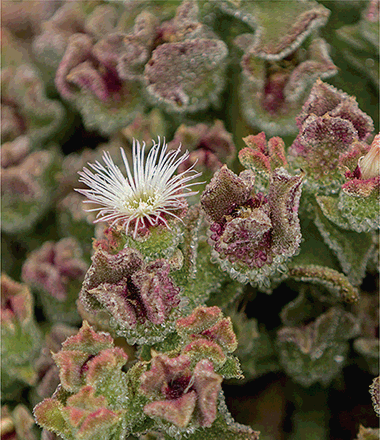The ice plant thrives in salty ocean-side mist. Barkla et al. used proteomics to identify proteins in these halophytes that are critical to the defense against too much salt. Specialized trichomes, known as epidermal bladder cells (EBCs), found on the surface of the ice plant can accumulate a concentration of over 1 M Na+. Several dozen proteins, including some involved in Crassulacean acid metabolism (CAM), as well as several transporters in the EBCs are responsive to salty conditions. Ionomics showed the accumulation of Mn, V, and Zn as well as NaCl. Thus, more than a storage tank for salty water, the EBC is metabolically nimble, shifting physiological and developmental systems in response to environmental conditions.







